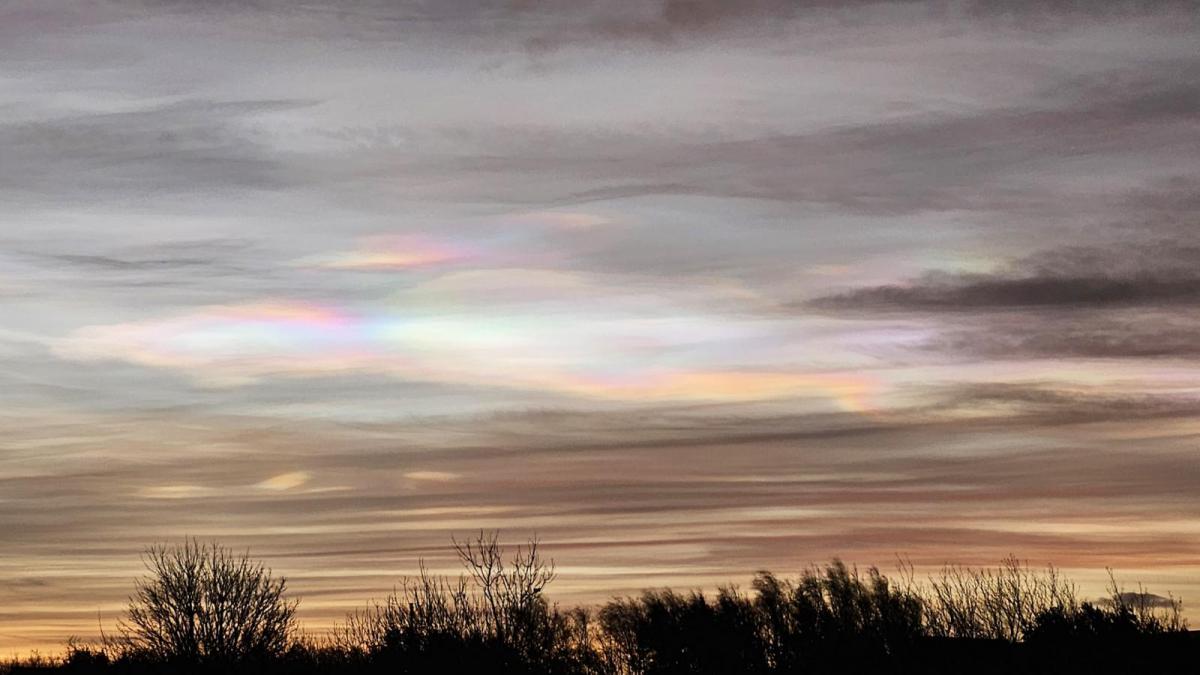Rare sightings of nacreous clouds as far south as Kent today
The stratospheric polar vortex is currently displaced towards northern Europe and has brought very cold temperatures in the stratosphere above the UK and Ireland, leading to nacreous clouds which have been sighted as far south as Kent.
Residents of the UK from Aberdeen to Kent have been treated to a rare sight over Britain these last few days.
Sightings of iridescent Nacreous clouds, PSCs (Polar Stratospheric Clouds) or mother-of-pearl clouds have greeted sky gazers all over the UK and Ireland today, though they are rarely seen this far south, as exceptional circumstances are required.
Nacreous clouds are usually seen in polar regions and need temperatures below -78C to form. These extreme temperatures are only found in the polar stratosphere at around 15-25km high in the atmosphere. They only form in the polar winter, when the lack of sunlight helps temperatures to drop particularly low. In the Arctic, they are usually composed of nitric and sulphuric acid and only form within the Polar Stratospheric Vortex. The stratosphere is generally very dry and so cloud formation is rare.
The Arctic Polar Stratospheric Vortex spends most of the time over the pole, but occasionally it gets displaced and when it comes towards northern Europe, here in the UK we can see the clouds within it.
 Polar vortex displaced from the North Pole towards northern Europe, hence the cold temperatures in the stratosphere over the UK
Polar vortex displaced from the North Pole towards northern Europe, hence the cold temperatures in the stratosphere over the UK
The 10 hPa temperature chart below, which is a level in the upper stratosphere, shows pockets of -80C across Britain this morning, though this is just a forecast, with nacreous clouds today seen outside these colder pockets.

Nacreous clouds are comprised of tiny ice particles approximately 10µm across, which are much smaller than the ice particles in normal clouds we see in the troposphere – where our weather happens. They must consist of crystals of similar sizes to create their distinctive bright iridescent colours through diffraction and interference.
Current weather model charts suggest that stratospheric temperatures over the UK may remain cold enough tomorrow and Saturday for further sightings of nacreous clouds. After that, the polar vortex, which is currently centred close to Norway and responsible for the cold conditions currently in the stratosphere above the UK, moves away northeast to sit over northern Russia.
Top photo by Jo Farrow.

